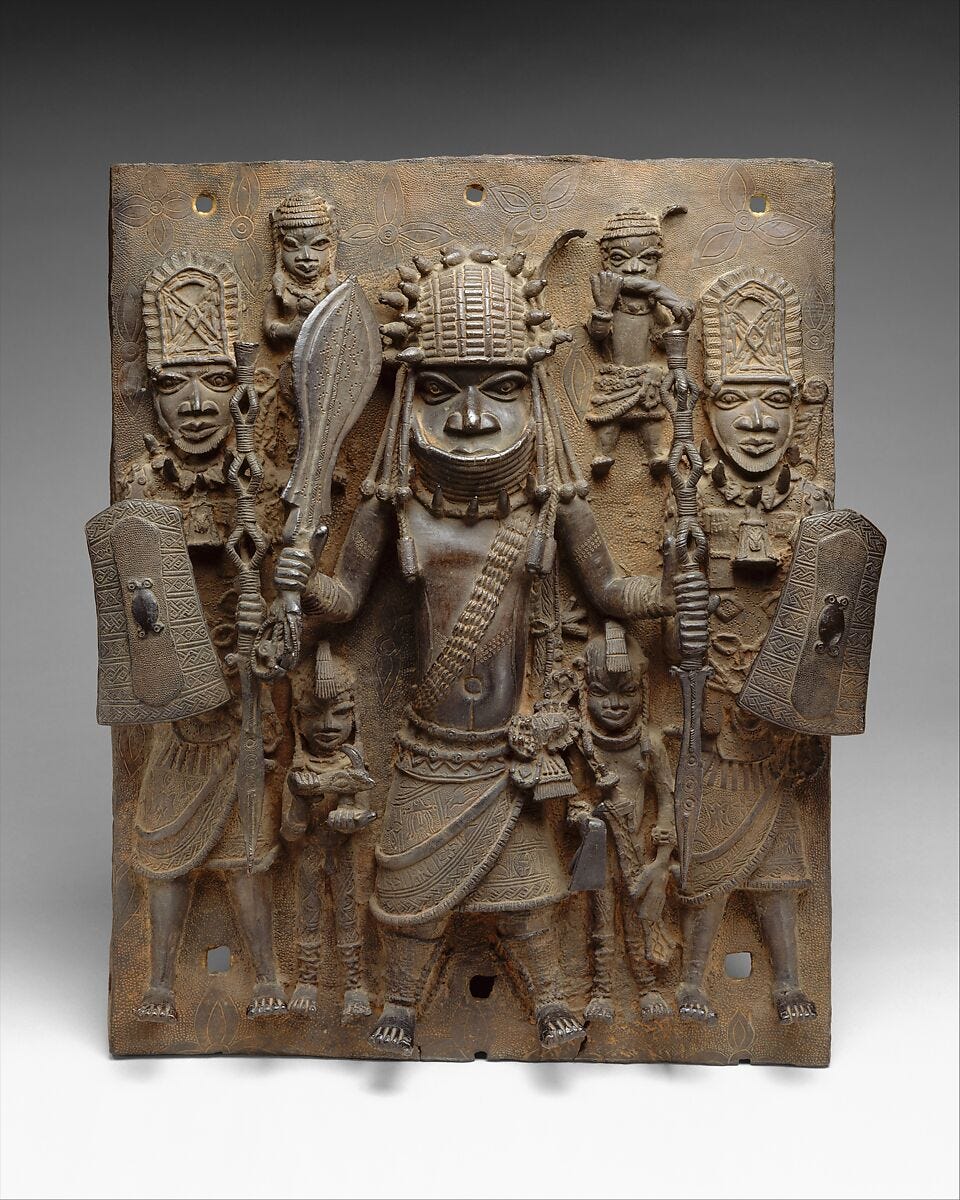Review of Michael Gomez's Exchanging our Country Marks (1998)
Michael A. Gomez, Exchanging our Country Marks: The Transformation of African Identities in the Colonial and Antebellum South (Chapel Hill, NC: University of North Carolina Press, 1998), pgs. 370

Michael Gomez (1955-present), a professor of history at New York University and the author of multiple books dealing with West Africa and the Atlantic world from the Medieval period to the nineteenth century authored a fascinating and thought-provoking book, Exchanging our Country Marks: The Transformation of African Identities in the Colonial and Antebellum South (1998). This book, part of a larger growth of Black Diaspora studies and the Black Atlantic world in the 1990s (as well as cultural studies), makes the argument that divisions between African peoples centered on ethnicity became superseded following their forced crossing of the Atlantic as African peoples became more unified under the conception of race or in other words their identification as “Black.” Distinctions that divided African ethnic groups were lost as an “African American” culture become predominant in the United States. This transition Gomez argues brought together unique African cultures over a large period in North America from the 1500s till the 1830s.
Exchanging our Country Marks central argument depends upon the West African world that Gomez highlights in the first six chapters. Gomez, a historian of West Africa, does a fantastic job of drawing the then recent historiography from both history and anthropology to create a picture of what Africa may have looked like (more on this later). Insightfully he points out that not only West Africa but also Madagascar and parts of East Africa were also part of the trade.
For Gomez, the beginnings of a “racial” identification begins to occur at the slave pens in West African ports. There, people from across the region are gathered and began to recognize that despite linguistic, ethnic, and cultural differences between those enslaved people around them, what made all of them prisoners on the slave ship was the color of their skin. In the Americas Gomez highlights how there are numerous factors playing into acculturation/assimilation of newly arrived African peoples. This process is slowed down in regions that continued to import enslaved people (such as pockets in the Deep South) and areas with large concentrations of enslaved people not directly controlled by white people (i.e. the largest plantations). Gomez, largely through newspaper and WPA narratives, shows how African ethnic cultures persisted and influenced the creation of an African American identity.
Chapter Eight left me rivetted, particularly in how the author addressed one of the glaring inconsistencies of the WPA narratives, how the interviewees refer to Africa. In the WPA narratives, Africa is framed as as an idealic (though somewhat savage) place where white men tricked Black men onto the slave ships and whisked them off to the New World. While certainly appealing to some as a way of describing the slave trade, Gomez, as a historian of West Africa, rejects this.
Africa had its own slave trade that had gradually accommodated a larger Atlantic trade, but it was a trade that Africans controlled, rather than Europeans. However, Gomez notes that the way in which Black Americans who were interviewed in the 1930s reflects a longer cultural tradition handed down by the first generation of enslaved people. Gomez agrees these narratives are inaccurate (I will call them myths), but this myth making to Gomez is evidence of the process of the creation of an African American identity. The absence of the truth shows that Black Americans in the United States had been telling their children and grandchildren stories that reflected a pan-African cultural identity or racial identity that transcended ethnic boundaries. Even those who did acknowledge that some Black people aided the slave trade are treated as traitors, though to differing ethnic groups in Africa, this idea of betraying the race would have been foreign as ethnic divisions dominated, rather than a broad racial consensus that unified Black people against white people.
This book was thought provoking, however I wonder if the WPA narratives and the emphasis on anthropological works limit the larger scope of the project. While these sources are useful, what is problematic is that these narratives are imposing a present African world on the past, as if Africa is an unchanging place that has not evolved and changed as the rest of the world has. Gomez did not fall into this when discussing polities of West Africa, however cultural and religious traditions are presented as unchanging across time. Similarly, the time and chronological change are issues. Frequently, Gomez cites examples from across decades of history. Those decades play a role in influencing how people view their world and the past. Though events may outwardly appear similar, their root causes may stem from completely different contexts. Another area to quibble is some of his framing of Africa over emphasizes the good attributes and downplays the oppression, violence, exploitation, and stratified nature of many African societies.
Overall, this book led me to think more deeply about the Atlantic world and the cultural creations occurring throughout its environs. For example, if African ethnic identities and customs persisted long after the arrival in America, did this influence how slaveholders viewed their enslaved people? Also, though the book focused largely on the South, I could not help wonder about the North and what led to the seeming disappearance of African sub-cultures. Finally, do we as scholars give enough importance to the role of ideas and how that shapes peoples joining movements. Gomez, particularly in Chapter Nine (my least favorite chapter), seems to downplay the importance of the role of ideology and theology on the mind when Africans are converting to Christianity in the Americas. While I do not fully have answers to these questions, this prompted me to think more deeply about the African influence in the Atlantic world and their role in the creation of the idea of race in the United States.
Robert Swanson



